Fashion Loyalty Programs: How Apparel Brands Can Boost Retention and Revenue
The global fashion e‑commerce apparel market is booming, projected to reach approximately USD 779 billion in 2025, up from around USD 714 billion in 2024, and expected to surge to USD 1.7 trillion by 2034. With online retail accounting for nearly 24% of total global retail sales by 2025, fashion brands face unprecedented opportunity and fierce competition.
Average customer acquisition cost (CAC) for fashion and apparel brands now sits at approximately $66 per new customer, while the broader e‑commerce average hovers around $78, highlighting the pressure on margin and the urgency of building retention-focused strategies to drive sustainable growth. Across the board, acquisition expenses have increased by nearly 60% over the past five years, with merchants now losing on average $29 per new customer.
In this saturated market, fashion loyalty programs are no longer just nice to have — they’re essential. By offering points, tiered status, gamification, exclusive rewards, and AI‑powered personalization, these programs help fashion and apparel brands differentiate, deepen emotional connections, and increase customer retention and lifetime value.
In this article, you'll discover:
- How fashion loyalty programs drive measurable benefits like repeat purchases, higher average order value, and stronger brand loyalty
- The most effective models: points‑based, tiered, subscription, and community‑driven
- Real examples from leading fashion brands and loyalty innovators
- Best‑practices to design and launch a powerful, AI-enhanced loyalty program that boosts engagement and revenue
Let’s explore how to transform loyalty into your competitive advantage in the fashion retail space!
Why Fashion Loyalty Programs Are More Important Than Ever
In today’s fashion industry, standing out is harder than ever. Customer acquisition costs continue to rise, while competition in both online and offline retail grows fiercer every year. That’s why loyalty programs have become essential tools for apparel brands aiming for long‑term growth.
Here’s why they matter:
- 83% of consumers say that belonging to a loyalty program influences their choice to shop with a brand again
- Loyalty members contribute approximately 12–18% more incremental revenue per year than non-members
- 54% of fashion shoppers report loyalty to clothing and apparel brands
- Brands that implement AI‑powered personalization typically see a 10–15% boost in revenue, with some leaders reaching up to 25%
- Customers with a strong emotional connection to a brand deliver up to 306% higher lifetime value than merely satisfied customers
For fashion retailers, this translates into real business impact: members shop more often, spend more per order, and form stronger emotional bonds with their favorite brands. From rewarding sustainable choices to offering early access to new collections, the right program turns casual buyers into passionate brand advocates.
The future of loyalty in fashion is personalized, data‑driven, and experience‑focused, making it one of the most powerful strategies apparel brands can adopt today.
Types of Loyalty Programs for Fashion & Apparel Brands
Not all loyalty programs are created equal. Fashion and apparel brands can choose from several models, each offering unique ways to engage customers and build long-term value. Here are the most effective types:
Points‑Based Programs
Points-based programs reward customers for their purchases and other brand interactions such as leaving reviews, sharing on social media, or referring friends. These programs are easy to understand and encourage frequent engagement.
A standout case is Mango’s loyalty program, which uses a fun and socially conscious theme. Members earn “likes” instead of traditional points, which they can redeem for rewards. What makes Mango’s program unique is that it also ties in with charitable actions, such as donating to the poor, adding a layer of purpose that resonates deeply with today’s shoppers. By blending rewards with meaningful causes, Mango has created one of the most creative loyalty programs in the fashion industry.
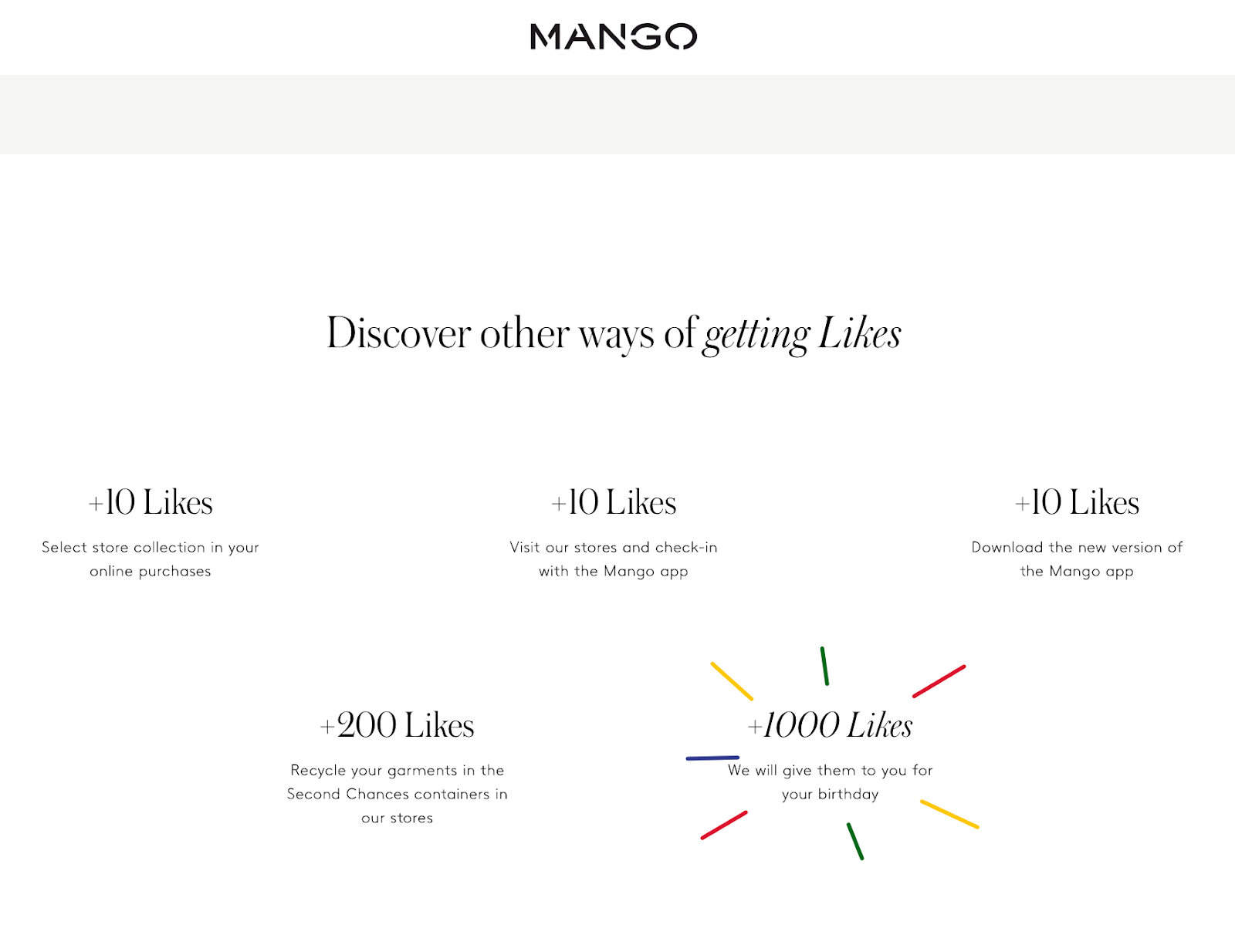
Tiered Loyalty Programs
Tiered loyalty programs create excitement and exclusivity by offering customers rewards that increase in value as they climb higher levels. This model motivates shoppers to spend more, not just to earn rewards, but to unlock prestige and access perks that feel truly special.
A wonderful example of a tiered loyalty program is the Black Card by Box Raw. It offers multiple membership levels, and with each upgrade, customers receive extra points for every dollar spent, a special level‑up reward, and even free products. The program is designed to feel progressively more rewarding and desirable, giving shoppers a strong reason to keep engaging with the brand. Box Raw has nailed the formula for making a loyalty program both aspirational and rewarding, perfectly blending exclusivity with tangible value.
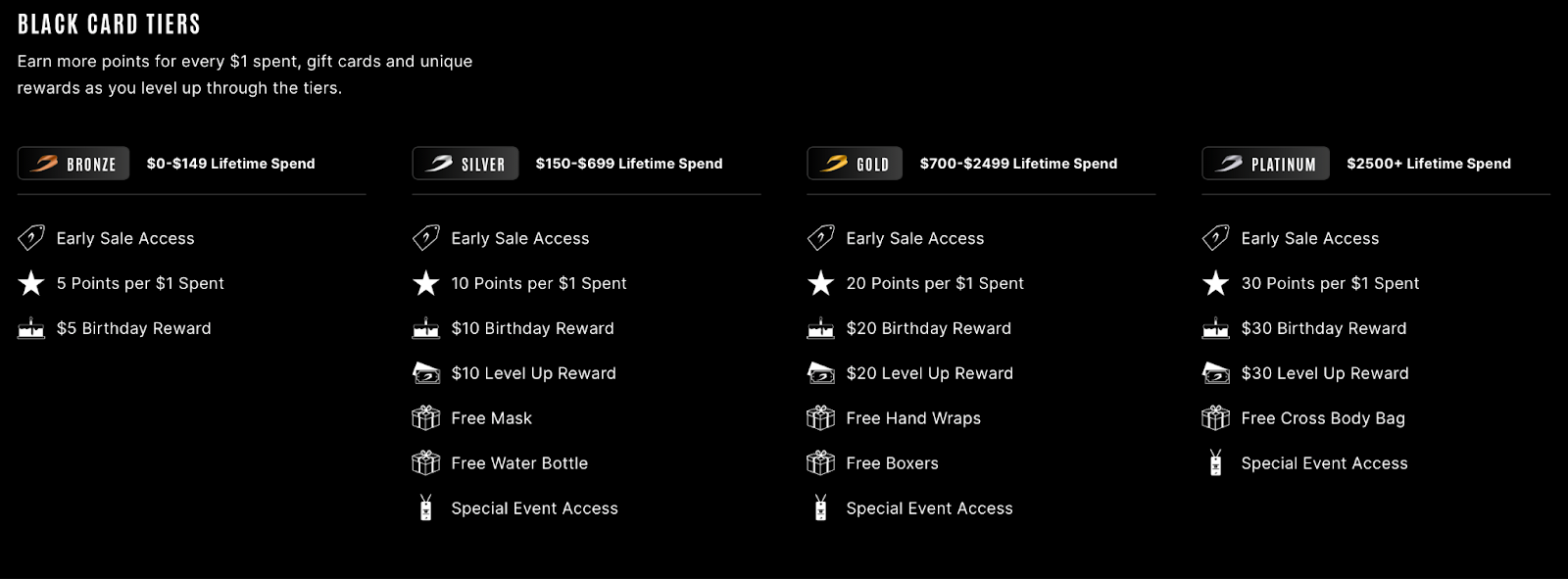
Subscription‑Based Loyalty Programs
Unlike traditional rewards models, subscription‑based loyalty programs ask customers to pay a fixed fee, monthly or annually, in exchange for premium, ongoing benefits. This approach creates predictable revenue for brands while fostering a deeper sense of commitment among members.
Common perks include:
- Exclusive discounts on new collections
- Free or expedited shipping
- Access to curated fashion boxes or personalized styling
- Invitations to partner events or experiences
One of the best examples in the fashion and lifestyle space is Lululemon’s subscription program. Built around health and fitness, it offers members instant access to thousands of workouts, exclusive discounts on apparel, and even reduced pricing with partner studios. The rewards go far beyond simple discounts, they’re designed to enhance the entire wellness journey. This loyalty program doesn’t just fit Lululemon’s brand identity; it strengthens it, making customers feel like part of a lifestyle movement rather than just a retail transaction.
By aligning benefits with customer passions, subscription‑based loyalty programs like Lululemon’s prove especially effective for premium apparel and lifestyle brands aiming to build long‑term loyalty and emotional connection.
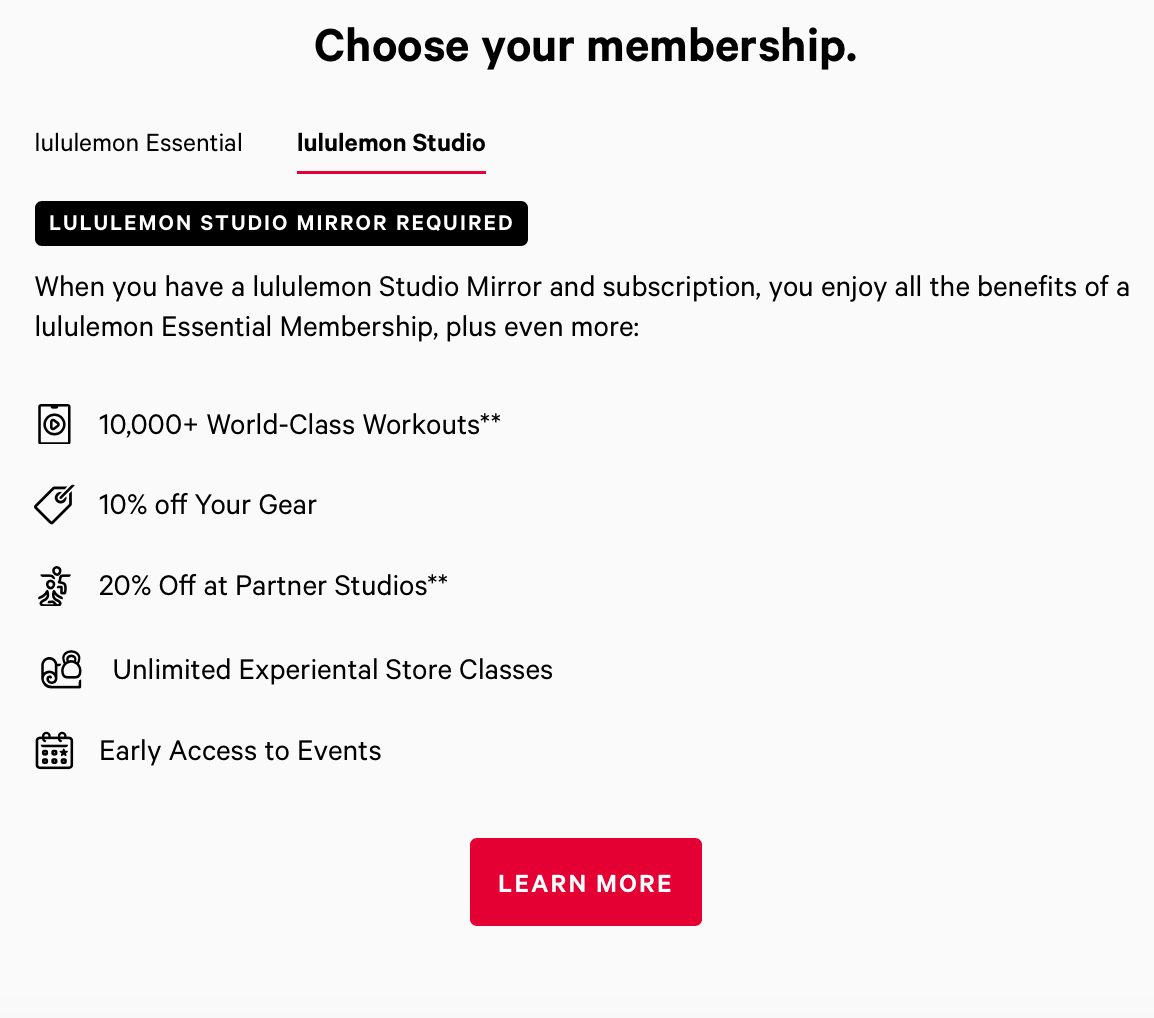
Key Benefits for Fashion & Apparel Brands
In the fast‑paced world of fashion, winning customer attention is only half the battle — the real challenge is keeping it. Rising customer acquisition costs make it increasingly expensive to attract new buyers, which is why smart apparel brands are turning to loyalty programs to maximize retention and long‑term revenue.
A well‑structured loyalty program doesn’t just offer discounts. It creates memorable experiences, strengthens emotional ties, and provides valuable insights that can transform casual shoppers into lifelong brand advocates. Here are the most impactful benefits:
- Boost in customer retention and repeat purchases: Acquiring new customers is costly, but keeping them is far more profitable. Loyalty members are significantly more likely to return for repeat purchases, ensuring a steady revenue stream while reducing churn.
- Higher order value & spend per customer: Shoppers often increase their basket size to unlock rewards, advance to the next tier, or redeem points. For many fashion retailers, loyalty programs directly translate into higher average order values.
- Enhanced brand experience with exclusivity: From early access to new collections and limited‑edition drops to VIP styling events, exclusive perks make members feel valued. This sense of privilege adds emotional excitement and strengthens brand differentiation.
- Stronger emotional connections and brand loyalty: Fashion is about identity and self‑expression. Programs that offer personalized experiences, such as birthday surprises, eco‑friendly rewards, or style‑based recommendations, help customers feel recognized and connected on a deeper level.
- Omnichannel engagement: Modern shoppers want seamless experiences whether they’re browsing online, shopping in‑store, or engaging via mobile apps. Omnichannel loyalty programs ensure customers can earn and redeem rewards anytime, anywhere, building consistency and trust.
- Valuable first‑party data and smarter segmentation: Every action within a loyalty program provides rich insights. Brands can use this first‑party data to fuel targeted marketing campaigns, personalize offers with AI, and predict future buying behavior, all while reducing dependence on third‑party cookies.
Best Practice Features for Effective Fashion Loyalty Programs
Not all loyalty programs are created equal. To truly stand out in today’s crowded fashion market, your program needs to be more than just a discount system. The best fashion loyalty programs blend clear value, personalization, and memorable experiences to keep customers coming back.
Here are the must‑have features that set successful programs apart:
- Clear and attainable points logic & tier structure: Customers need to instantly understand how they earn and redeem rewards. Keep the rules simple, transparent, and motivating. Tiered systems like silver, gold, and platinum levels work especially well in fashion, as they encourage shoppers to spend more to unlock exclusive perks.
- AI‑driven personalization & recommendations: Fashion is highly personal, which makes data‑driven customization a game changer. AI can suggest products based on past purchases, tailor offers to individual preferences, and even predict when a customer is most likely to engage. Brands using AI personalization report significant boosts in retention and revenue.
- Omnichannel support for a seamless experience: Today’s shoppers expect to earn and redeem rewards wherever they interact with your brand online, in-store, or on mobile. Integrations with digital wallets, mobile passes, QR codes, and push notifications ensure that your loyalty program feels effortless and accessible across all touchpoints.
- Gamification elements to keep customers engaged: Adding playful mechanics like badges, challenges, referral bonuses, or progress trackers makes your program more fun and interactive. For example, Gameball uses gamification to keep fashion customers motivated, creating a sense of achievement that goes beyond simple rewards.
- Experiential and exclusive rewards: Discounts are good but experiences are unforgettable. Offering early access to collections, VIP styling sessions, or invitations to private events makes members feel truly special and strengthens emotional loyalty to your brand.
- Community or lifestyle integration: Modern consumers, especially Gen Z and Millennials, value purpose‑driven brands. Rewarding eco‑friendly behaviors, user‑generated content, or participation in brand‑hosted clubs creates a lifestyle ecosystem around your fashion label. Programs like Patagonia’s sustainability focus and Nike’s fitness communities show how lifestyle integration can build powerful emotional ties.
Case Studies & Real Brand Examples
To see how loyalty programs truly shine in the fashion industry, let’s look at some standout examples from leading brands. These programs prove that when done right, loyalty can drive both revenue and emotional connection.
H&M Membership

H&M offers a free‑to‑join membership that rewards customers with points for every purchase. Members enjoy perks such as exclusive discounts, free online returns, and early access to limited collections. Its seamless omnichannel integration from app to in‑store makes it easy for customers to stay engaged.
Urban Outfitters: UO Rewards
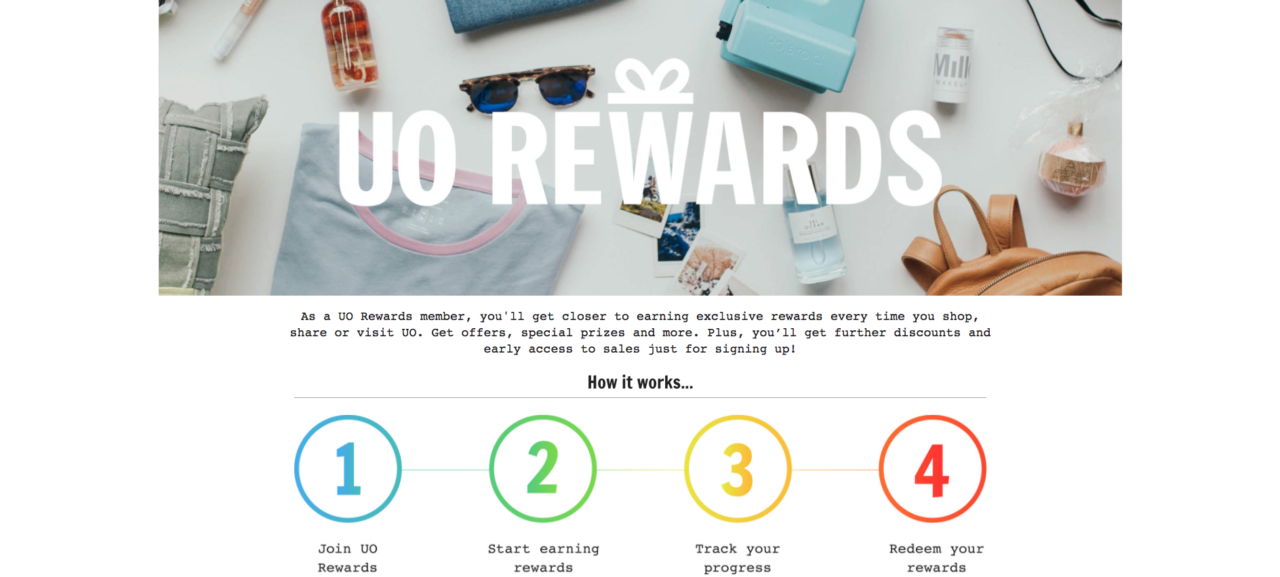
Urban Outfitters has built a highly engaging program where members earn points not only through purchases but also by writing reviews and participating in style challenges. Perks include birthday discounts, first access to sales, and VIP invitations, making the program feel both social and exclusive.
Simply Be Perks
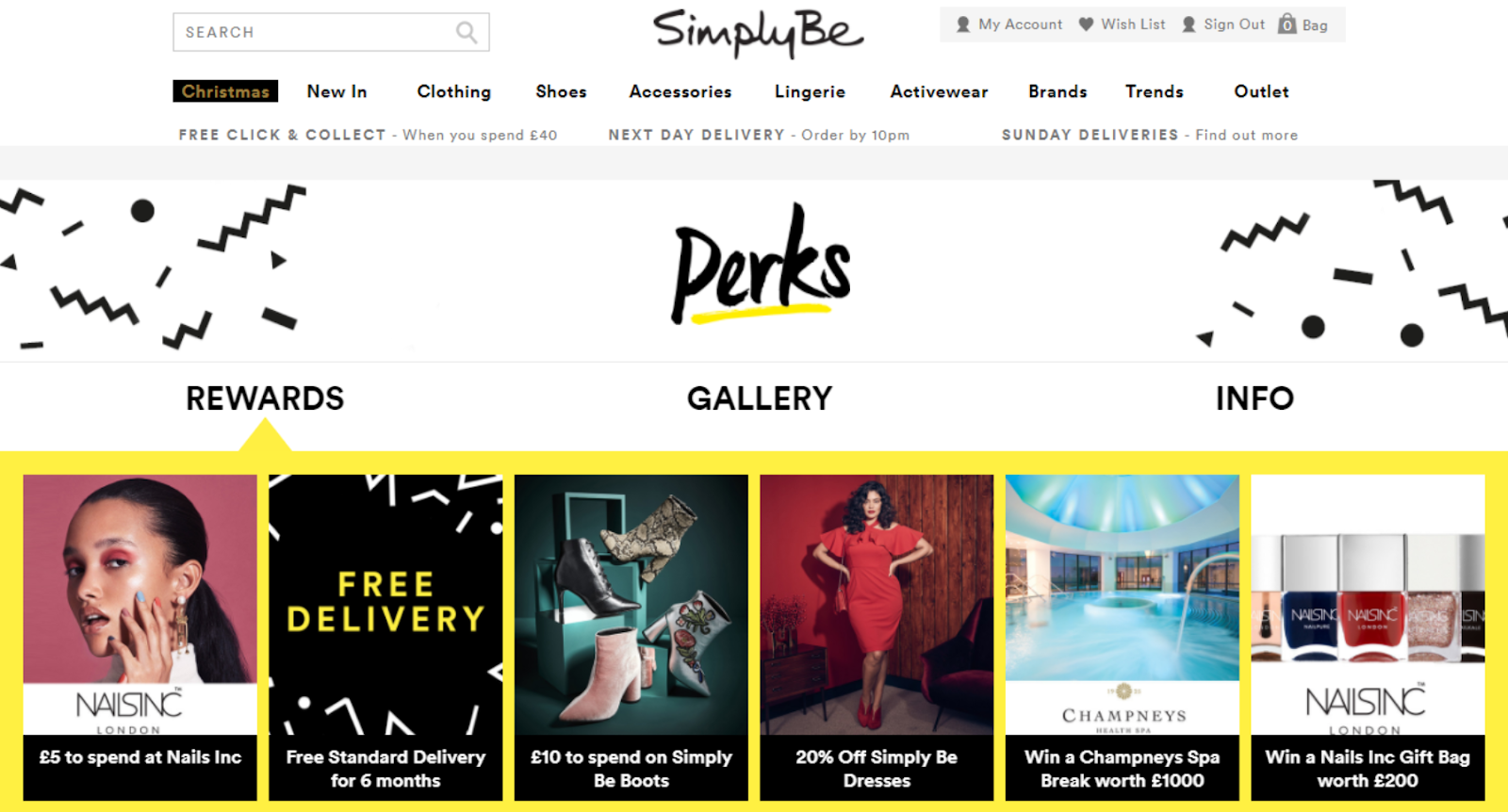
This program stands out for its inclusivity, offering members consistent value with personalized rewards and special offers. Simply Be uses loyalty as a way to reinforce its brand mission of empowering customers through fashion.
How to Build Your Own Fashion Loyalty Program
Creating a successful fashion loyalty program doesn’t have to be complicated. With the right approach, you can design a program that not only boosts retention but also strengthens your brand identity and customer relationships.
Here’s a simple step‑by‑step guide to get started.
Step 1: Define Your Goals
Before you choose a model or design rewards, decide what success looks like for your brand. Are you aiming to increase repeat purchases, grow average order value, or encourage referrals? Clear KPIs will guide every decision you make.
Step 2: Choose the Right Loyalty Model
Different fashion brands thrive with different structures. Points‑based systems work well for frequent purchases, while tiered programs create aspirational goals. Subscription models can add recurring revenue, and lifestyle‑focused programs help align with your customers’ values. Growave makes it easy to set up any of these models with its points, tier logic, referral, wishlist, and gamification features.
Step 3: Personalize the Experience
Today’s customers expect more than generic discounts. With AI‑powered segmentation, you can deliver product recommendations, targeted rewards, and predictive offers that feel tailor‑made. Leveraging first‑party data ensures your program stays relevant and valuable.
Step 4: Integrate Across Every Channel
Fashion shopping is no longer limited to one touchpoint. Make sure your program works seamlessly across mobile apps, online stores, and physical retail locations. With Growave, you can connect rewards to digital wallets, mobile passes, and in‑store experiences so customers stay engaged wherever they shop.
Step 5: Design a Reward Catalog That Inspires
Mix practical benefits like free shipping and discounts with aspirational perks such as early access to collections, VIP styling events, or exclusive collaborations. The goal is to make rewards feel worth striving for while staying aligned with your brand’s image.
Step 6: Launch, Monitor, and Optimize
A loyalty program is never “set it and forget it.” Track engagement, test new features, and gather customer feedback to refine the experience. Growave’s analytics and gamification features help you adjust your strategy and keep members motivated over the long term.
Conclusion
In the fast‑moving world of fashion and apparel, building long‑lasting customer relationships is just as important as creating great designs. A well‑crafted loyalty program can make all the difference.
By now, we’ve seen how the best fashion loyalty programs deliver measurable impact:
- Retention: Members are more likely to shop again, boosting long‑term revenue.
- Revenue lift: Customers in loyalty programs tend to spend more per order and visit more often.
- Emotional engagement: Exclusive rewards, VIP access, and community experiences help customers feel connected to your brand.
- Valuable data insights: Loyalty programs generate first‑party data that fuels AI‑driven personalization and smarter marketing.
The takeaway is clear: a loyalty program designed around your brand identity and customer values isn’t just a nice‑to‑have — it’s a powerful growth engine.
If you’re ready to create a loyalty program that keeps your customers engaged, boosts revenue, and strengthens your fashion brand, book a demo with Growave today. Our all‑in‑one platform gives you the tools to build, personalize, and scale your program with ease.
This blog post was originally written by Dastan Chikeev and later updated for accuracy and relevance by Polina Kulikova.
Frequently asked questions
What is a fashion loyalty program?
A fashion loyalty program is a structured system that rewards customers for shopping with a brand. Rewards can include points, exclusive discounts, early access to collections, VIP event invitations, or even lifestyle perks. The goal is to encourage repeat purchases and build long‑term relationships.
Why do apparel brands need a loyalty program?
Because customer acquisition costs are higher than ever, keeping existing customers is crucial. Loyalty programs help apparel brands increase retention, raise average order value, and create emotional connections that lead to stronger brand loyalty.
Which type of loyalty program works best for fashion brands?
It depends on your brand identity and audience.
- Points‑based programs work well for frequent, affordable purchases.
- Tiered programs are great for premium and aspirational brands.
- Subscription models create recurring revenue and exclusive value.
Lifestyle or community programs align with values like sustainability or wellness.
How does AI personalization improve loyalty programs?
AI helps fashion brands analyze customer data to deliver personalized offers, product recommendations, and predictive rewards. This makes loyalty programs more relevant, leading to higher engagement and a stronger return on investment.
Can loyalty programs work both online and in‑store?
Yes. Modern programs are designed for omnichannel engagement. Customers can earn and redeem rewards across mobile apps, websites, and physical stores, ensuring a seamless shopping experience.
What are examples of successful fashion loyalty programs?
Some standout examples include:
- H&M Membership, offering points, discounts, and sustainability perks
- Urban Outfitters UO Rewards, blending shopping rewards with social engagement
- Mango Likes, rewarding purchases and charitable actions
Box Raw Black Card, using tiered VIP benefits and gamification
How can I start a fashion loyalty program for my brand?
Begin by defining your goals, such as boosting retention or raising average order value. Then choose the right model (points, tiered, subscription, lifestyle). Using a platform like Growave, you can easily set up points, referrals, tiers, gamification, and personalization to launch a program that fits your brand.
How long does it take to see results from a loyalty program?
Most fashion brands see an impact within the first 3-6 months, especially when they actively promote the program and use personalization to keep members engaged.





